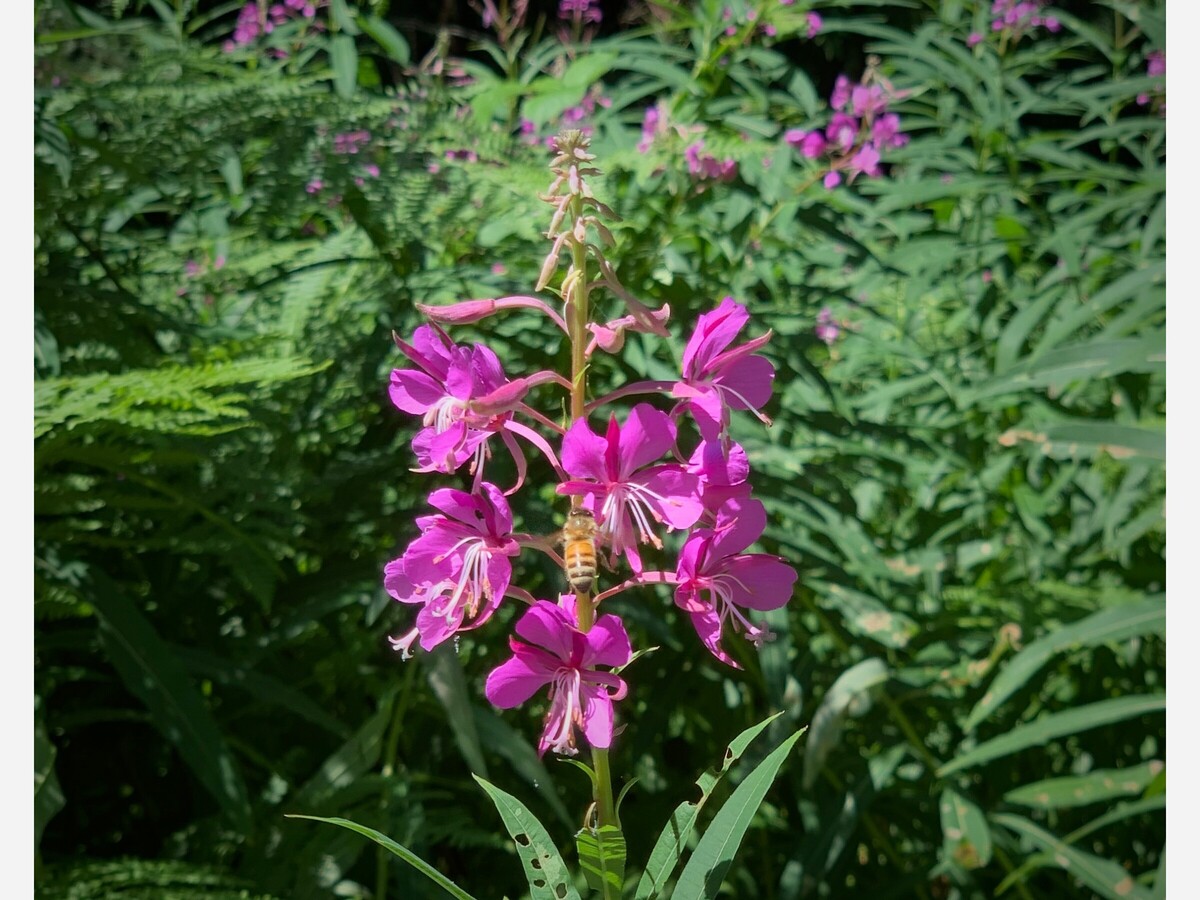Image

The pollinators are literally buzzing about the big fireweed patches at Hamlin Park these days.
Fireweed (Chamerion angustifolium) is common across North America and gets its name because it is a pioneer species - the first plant to grow after a fire or other disturbance.
Despite its name, fireweed is considered a beneficial species (not a weed). There are two, large fireweed patches at the forest restoration site at the north end of Hamlin Park where the fireweed is aggressive enough to out-compete even the noxious weeds such as the himalayan blackberry.
Fireweed is traditionally harvested by native peoples of the Pacific Northwest and in Lushootseed (the traditional language of the Puget Sound) its name is x̌ač̓tac. In the spring, fireweed shoots are a nutritious vegetable and tea can be made from the leaves. The summer nectar is used for honey and jelly and in the autumn, the fluff can be used as fiber for weaving and padding.
If you walk through Hamlin Park, take some time to stand near the fireweed and watch for hummingbirds, bees and butterflies feasting on the purple blossoms.
Fireweed is an impressive grower: each year the plants grow from underground shoots into towering stocks topped by purple flowers. Later in the summer, they will release fluff to float on the breeze and spread seeds far and wide. The canes die back in the autumn and start over again in the spring.
There’s plenty of forest restoration work to be done in Hamlin Park and at parks across Shoreline. Work parties are a great way to make new friends and connect with our natural open spaces.